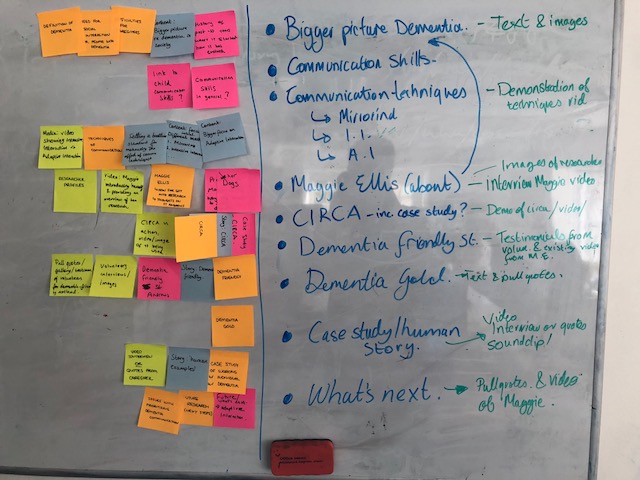Writing long-forms as a team
As you may already know, the digital communications team have recently redeveloped the University’s research webpages. Alongside a new homepage, the research showcase page highlights the range of research taking place at St Andrews. As part of this project, the content team were tasked to create two new research focused long-forms, focusing on coastal erosion and dementia communication techniques.
Normally long-forms are written by one member of the content team, although there have been some stories which have been jointly written, for example, Smart at first sight. It takes around eight weeks to create a long-form story, however for the research project the team only had six weeks to produce two. These were to be completed was alongside ten research case studies and the other work required to get the new research website ready, so the pressure was well and truly on. The content team decided that the only way to make the deadline on time was to write the long-forms together.
Creating an outline
After meeting with the relevant researchers, the team created an outline for the two long-forms. The sections for each long-from were then divided between the team so that each person was responsible for individual sections. The shared workload made the task a lot more manageable as it meant that no one person was required to research, write, and produce an entire long-form story. Once a section was completed it was uploaded into a shared document so the rest of the team could review it and make suggestions. Using shared documents was helpful in knowing what information had already been covered to avoid duplication.

Paired writing
The benefit of paired writing also meant that if a member of the team was on annual leave or had other work commitments, work on the long-forms did not have to stop. As we all had access to the shared documents, any member of the team was able to pick up unfinished work if required. This was also useful when it came to communicating with the researchers.
With busy work schedules, the researchers were not always able to respond to our emails straight away. However, as we used a shared mailbox for emailing the researchers, it meant that any emails we received could be dealt by any member of the team, allowing for quicker communication.
Multimedia
Long-forms make use of multimedia items such as videos and images, which can be a time-consuming process to collate and edit however working together made it easier to source and produce the media needed for each long-form. Our graphic designer, Lewis, edited the videos featured on the new long-forms. Using the skills available in our team allowed for a quicker turn around as outsourcing production can be timely. Time was something we did not have an abundance of.
Together we were able to create two new-long forms in six weeks and they are scheduled to be published online in the coming weeks. Paired writing brought many advantages, and it would not have been possible to get the stories finished otherwise. After the success of paired writing, it is something that the team will consider for future long-form stories.